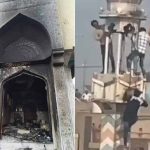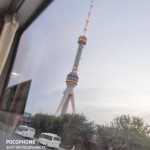By Dr. Omar Ashour
The recapture by Iraqi forces from so-called Islamic State (IS) of large parts of Ramadi marks the latest territorial setback for the jihadist group following its ejection from places like Tikrit, Sinjar and Baiji. Despite the reversals though – and more than a year of pummelling from air strikes – IS has proven to be remarkably resistant.
It has recaptured some lost territories in eastern and central Syria, consolidated its hold over areas surrounding the northern city of Raqqa, and remains entrenched in Iraq’s second city of Mosul. Like the cases of the US troop surge of 2007, and the anti-insurgent “Awakening Councils” of Sunni tribesmen in 2007-2008 in Iraq, tactical victories have not translated into a strategic defeat of IS. And there are reasons for that.
Prioritisation and centralisation are two keywords. “Daesh Arabic derogatory acronym for IS escalates and attacks… once every two months? Syrian President Bashar al- Assad and his… allies mass-bomb us every half an hour. You calculate the resulting deaths,” said a former rebel commander, who did not want to be identified. If the priority of fighting President Assad among Syria’s armed opposition is clear, the de-centralisation of the rebels’ command-and-control structures can and will cause major setbacks in the US-led coalition’s proposed strategy to counter IS.
Unfortunately, this is not the only problem. Compared to the Taliban regime, which fell in a two-month campaign by Western-led strikes and de-centralised Afghan Islamist and secular rebel forces, IS proved to be more resilient. And its resilience is puzzling.
Outnumbered
Militarily, the organisation’s strength and power ratios pale in comparison to its foes. The US Central Intelligence Agency (CIA) estimated in September 2014 that IS had somewhere between 20,000 and 31,000 fighters. Considering the Iraqi armed and security forces alone, this translates to at least an 8:1 power ratio.
This also excludes the Iraqi forces’ allies, including Shia militias, Sunni tribal militias, Kurdish peshmerga forces, and a 60-plus state coalition with tens of thousands of sorties striking IS locations since September 2014. On 10 June 2014, the Mosul garrison of 30,000 Iraqi security forces fell to an IS-attack force estimated to comprise between 800 to 1,500 fighters.
The two Mosul-based Iraqi divisions outnumbered the attackers by at least 20-to-1. In other areas, where IS has nominal control, such as north-eastern Sinai in Egypt, the power-ratio between government forces and IS loyalists is more than 500-to-1.
Disperse and conceal
So far, IS survived more than 8,000 air strikes and the killing of more than 10,000 of its fighters since the beginning of the air campaign, according to the US defence department. Still, the organisation does not have major problems in recruitment and mobilisation, especially after the coalition intervention.
Its response to the air strikes has been to disperse and conceal equipment and blend in with civilians when not directly under attack. It still has the capacity of tactical surprise and taking full advantage of the fluid and confusing battle space.
It also modified its terror strategy towards Western cities. Before the air strikes, there was one IS-related attack in a Western city. Since the air strikes, there have been more than 25. This is not to say that IS will not be eventually defeated or that the 2010 predictions of then-UK armed forces chief Gen Sir David Richards will apply in its case.

Three pillars
The Western counter-strategy has had some positive results. It is based on three pillars: air strikes for short-term containment, armed local partners for mid-term destruction, and reforming the political environments through reconciliation and democratization for mid- to long-term prevention.
The air strikes over Iraq and Syria have compelled IS to limit the usage of conventional military tactics, which it used to pursue, such as in mid-2014 when it invaded swathes of territory by moving convoys of tens or hundreds of armoured vehicles and armed pick-up trucks. The coalition’s would-be local partners are, theoretically, to assume responsibility for militarily defeating IS on the ground.
This pillar is problematic, given the aforementioned issues of centralisation and prioritisation affecting the anti-Assad rebels. This element of the strategy also faced major setbacks that included attacks by al-Nusra Front on US-trained anti-IS rebels and Russian air strikes on US-backed rebel groups.
Underlying issues
Success is even more difficult in the third pillar. It acknowledges that IS is a symptom, not a cause, of the dysfunctional politics in the region. Hence, any long-term solution must reform the political environment that consistently engendered violent radicalisation for more than four decades. Defeating IS militarily would only temporarily mask the deep structural problems behind its emergence, not only in Iraq and Syria, but also in Egypt, Libya, Yemen and Saudi Arabia. Hence, the military defeat of IS would be the equivalent of putting a bandage on a festering wound. A sustained political reform and reconciliation processes will be necessary eventually – a strategic objective should not be missed by decision-makers during the military campaign.
‘Courtesy BBC News’.







